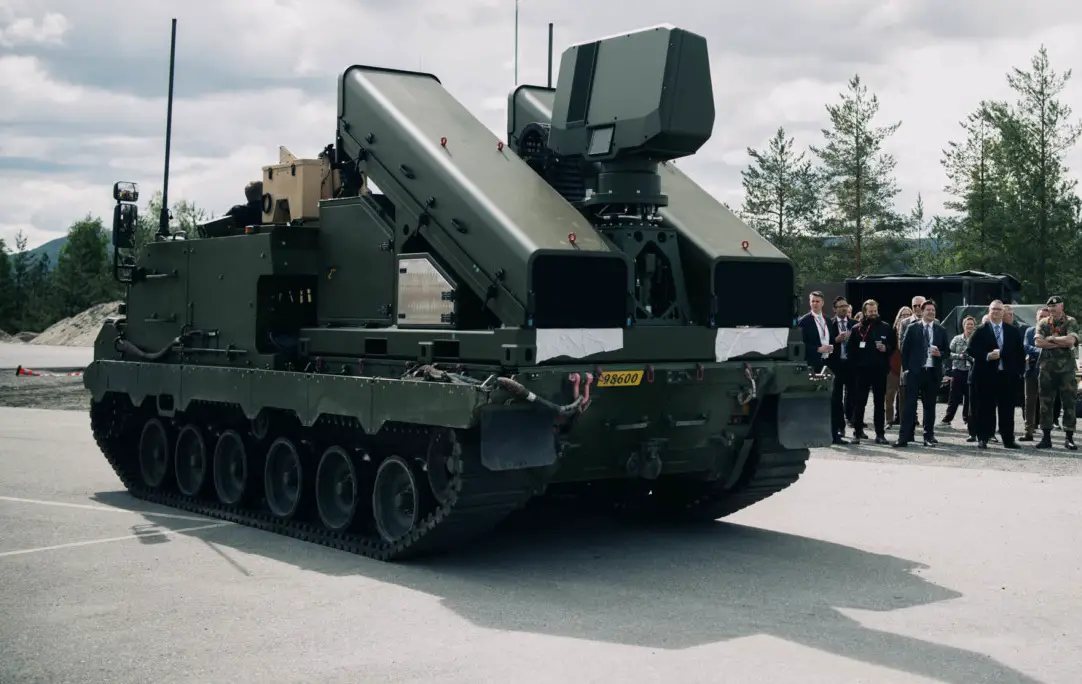Norway’s Prime Minister Jonas Gahr Støre revealed on Thursday a generous aid package for Ukraine, consisting of IRIS-T anti-aircraft missiles, mine clearing equipment, and critical energy infrastructure support. The announcement was made during Støre’s official visit to Kyiv, where he underscored Norway’s commitment to assisting Ukraine in its pursuit of stability and resilience amid ongoing regional tensions. The cornerstone of this aid package is the provision of IRIS-T anti-aircraft missiles, a versatile medium-range infrared homing air-to-air missile system. Developed in collaboration with other NATO member countries, the IRIS-T is designed to replace the AIM-9 Sidewinder, providing enhanced air defense capabilities. The missile’s adaptability allows for compatibility with Sweden’s own missile systems, further reinforcing Ukraine’s defensive posture.
The statement released by the Norwegian government highlighted the pivotal role that air defense has played in preventing Russia’s attempts to seize control of Ukrainian airspace. By aiding Ukraine in maintaining control of its skies, Norway’s contribution has not only minimized civilian suffering but also averted substantial military losses. Norway’s aid package extends to the establishment of safe passages through minefields. The provision of portable kits for mine clearing represents a tangible step towards creating a safer environment for civilians and armed forces alike. In addition, Norway’s commitment to assisting Ukraine’s energy infrastructure reflects a holistic approach to addressing the country’s pressing needs, ensuring its continued functionality even in the face of adversity.

The IRIS-T (InfraRed Imaging System Tail/Thrust Vector-Controlled) is a medium range infrared homing air-to-air missile available in both air-to-air and ground defense surface-to-air variants. It also is called AIM-2000. The missile was developed in the late 1990s–early 2000s by a German-led program to develop a short to medium range infrared homing air-to-air missile to replace the AIM-9 Sidewinder in use by some NATO member countries at the time. A goal of the program was for any aircraft capable of firing the Sidewinder to also be capable of launching the IRIS-T. The air-to-air variant was fielded in 2005. Surface-to-air defence systems variants came later, with the short-range IRIS-T SLS fielded in 2015, and the medium-range IRIS-T SLM fielded in 2022.
Germany started of the IRIS-T development, in collaboration with Greece, Italy, Norway, Sweden and Canada. A proof of concept test firing to acquire, track, and engage a target representing a small fast attack boat was conducted in Norway in September 2016, where the IRIS-T missile was launched from an RNoAF F-16AM multirole aircraft. Norway is also developing its short range air defence, the “Mobile Ground Based Air Defence System”. It is using elements of the NASAMS 3 system, and elements from the IRIS-T SLS system. The purchase includes: 36 IRIS-T SLS missiles, 6 mobile launchers PMMC G5 equipped with 6 IRIS-T SLS canister launchers and a XENTA-M X-band radars designed by Weibel Scientific, 3 High Mobility Launcher (HML) HMMWV-based equipped with a roof rack with up to 4 AIM-120B AMRAAM or 6 AIM-120C missiles and a command and control system based on the NASAMS 3.
















